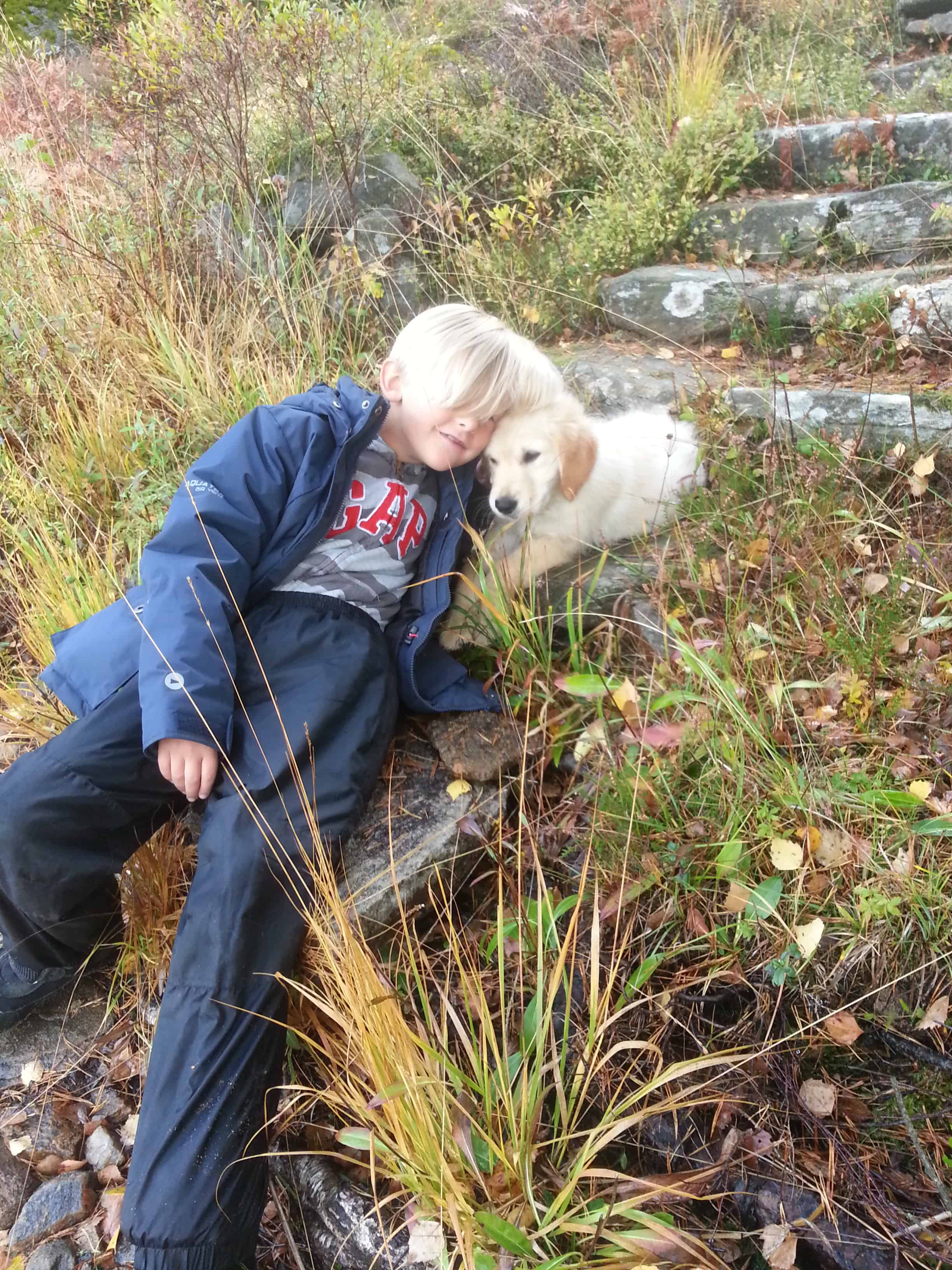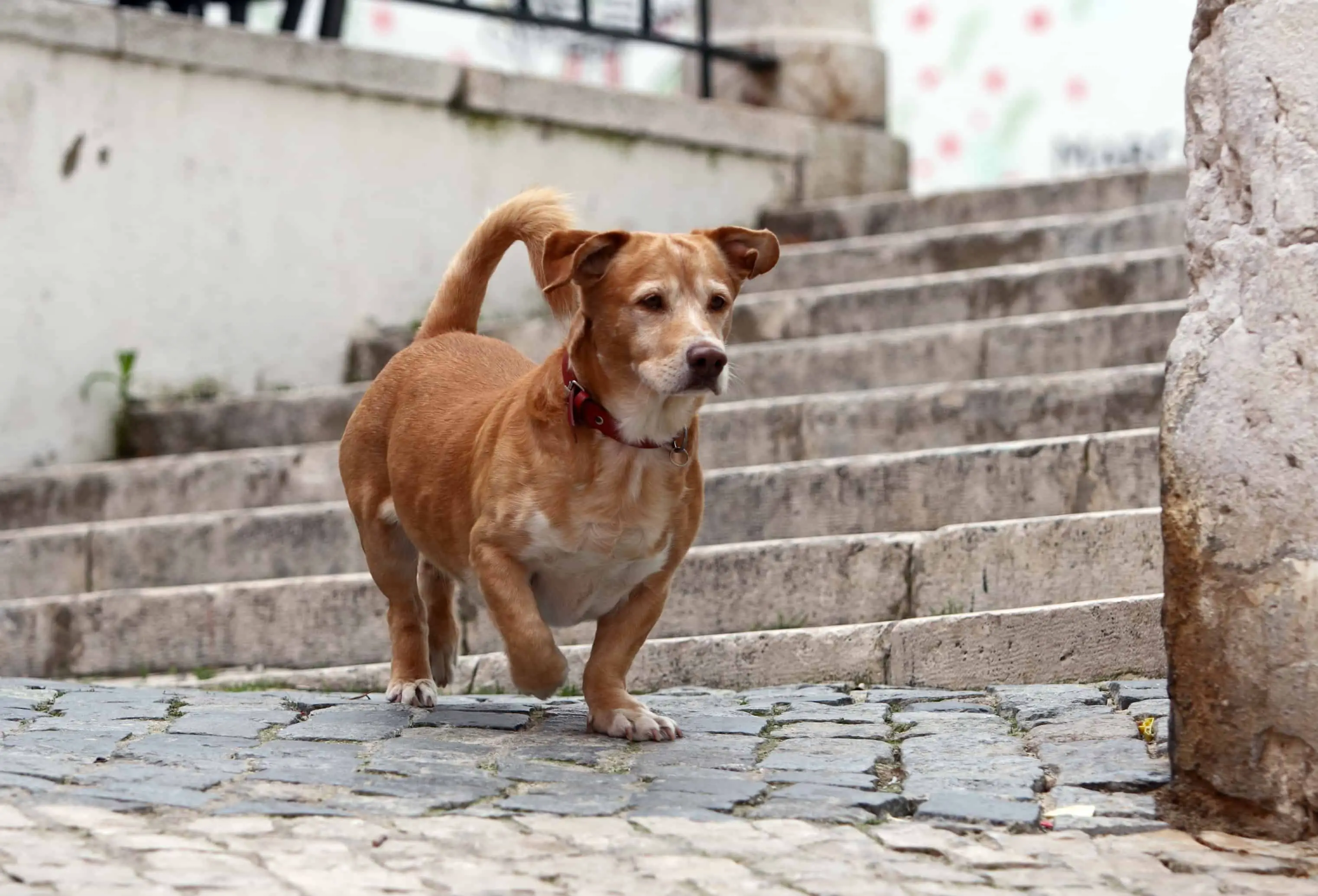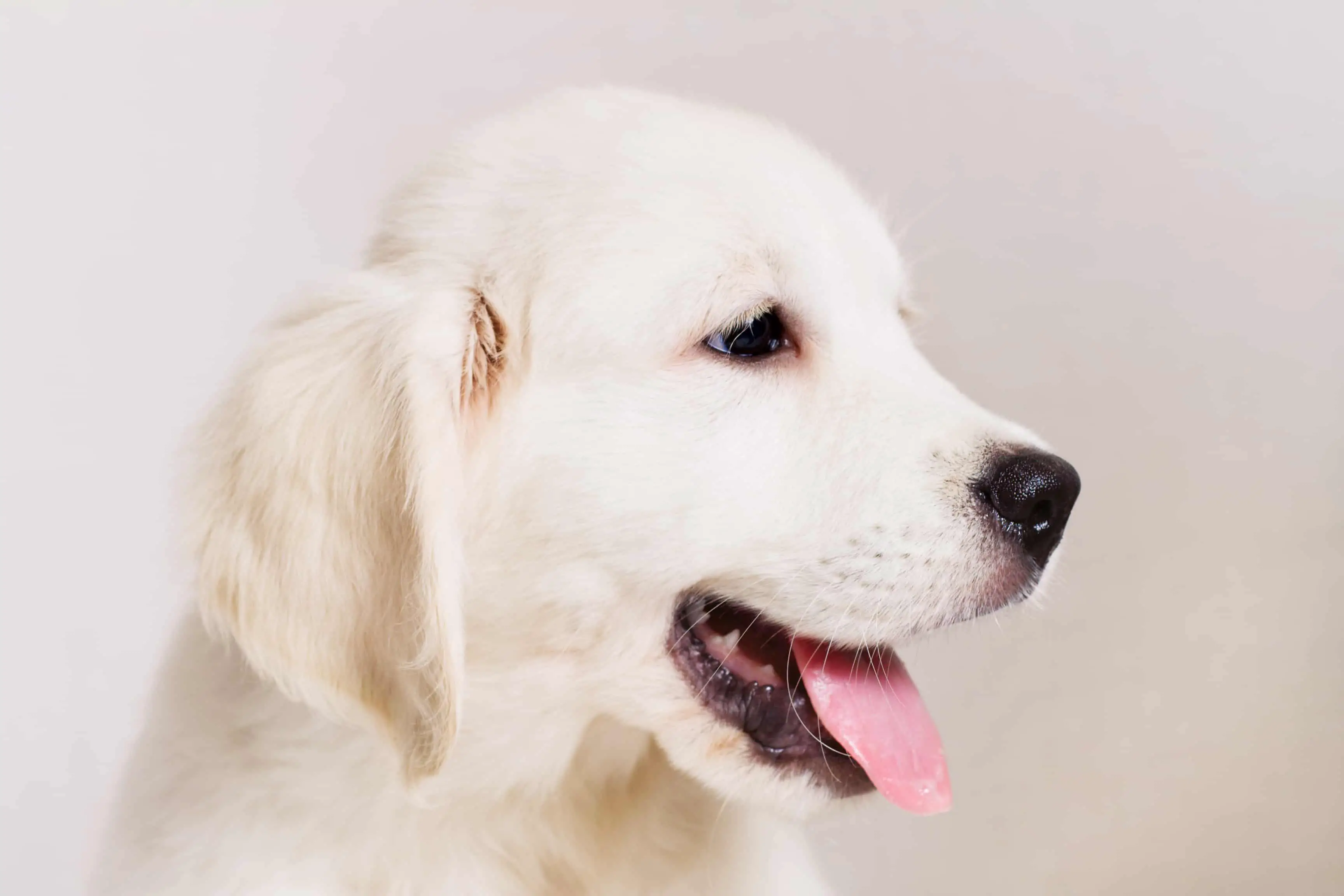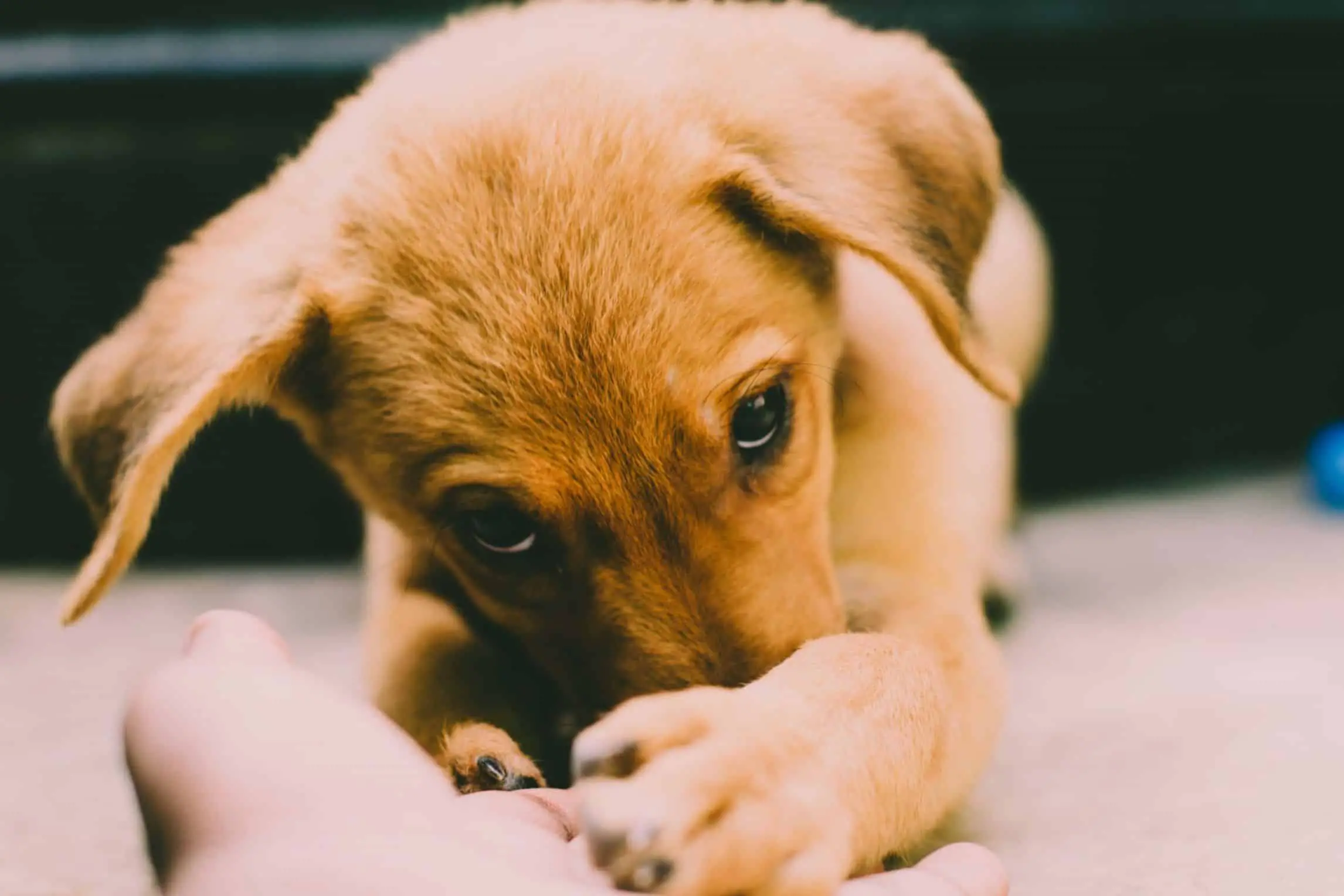We have made a habit of always using pet stair gates or doors that restrict all of our staircases. While the set up will be different in all homes, we still would recommend this for all puppy owners. When the dog has grown up it becomes yet another question, but when raising a puppy it is important for several reasons to create boundaries.
What dangers do stairs pose?
Aside from the flight of stairs seeming intimidating to your puppy in a way that he/she also dreads the experience, they hold hidden dangers and worst case scenario they could even kill him. The dangers in stairs come about when your pup slips or tumbles because he loses grip. This mostly happens on polished, waxed or marble floors, which tend to be extremely slippery for his paws.
Research suggests that puppies should not be introduced to stairs until they are 12 weeks old. Large dog breeds who tend to have hip problems due to their size should be introduced to stairs way later than the standard 12 weeks.
Stairs not only cause him physical harm but psychological harm as well. Even if your pup won’t get injured, chances are that the slippery stairs may damage his confidence and this in turn will make training him a tad more difficult.
What you can do:
- For polished or waxed floors, you can put up a carpet or a padding to make the area soft for landing and prevent slip-ups or lose of grip.
- For large breed puppies, it is recommended that you carry him up and down the stairs until he is about 12 months old or too heavy for your comfort.
- Do not let him navigate the stairs when you are not present
- You can install a pet stair gate to keep him safe
- Teach him to use the stairs with him in the lead so you can be in control
- Do not let him jump the stairs two or three steps at a time
In the event that your pup tumbles from the stairs, the resulting injuries could be too serious and this only further complicates issues. Some dogs may never fully recover from a fall. As a pet owner you may have heard about hip dysplasia which is a resulting condition from a fall.
In large dog breeds, this condition is sort of preexistent due to their large size that causes a strain to developing bone structures so it is best to keep the big guys from the stairs. Even jumping from sofas, chairs or beds can cause unnecessary damage to your puppy. All these strenuous activities predispose your pup to hip dysplasia.

Umbra and August loves outdoor stairs though!
So, what is hip dysplasia?
Both the human and the dog hip joint is connected with a ball and socket mechanism. Dogs with hip dysplasia develop issues with this joint in such a way that it does not develop properly and constantly rubs and grinds instead of sliding smoothly. This unnormalized movement will result in deterioration over time and ultimately a loss of function in the joint.
Hip dysplasia is therefore a common skeletal condition in large or giant breed dogs but that does not mean that it cannot affect small dogs either. All dogs are at risk of getting hip dysplasia but with early and proper diagnosis, proper care and enough Tender Loving Care, your canine friend will be able to pull through and get back to his normal self again.
What causes hip dysplasia in dogs?
The causes of hip dysplasia are varied factors but the main cause is genetics. This condition is a hereditary condition that is passed down a dog generation and is mostly common in large or giant breed dogs. Large breed dogs include Labrador retrievers, German Shepherds, Great Dane, St. Bernard, Rottweilers and Old English sheep dogs to mention just a few.
Other factors such as environmental influences the development of hip dysplasia. In fact, environmental factors work to amplify or rather makes the situation worse. They are aspects like your dog’s nutrition or diet, exercise routine, excessive growth or weight gain.
Signs of hip dysplasia
Hip dysplasia is a stubborn condition to detect as there is little to no link between age and how worse the condition could get, though it develops in young growing dogs. There are cases in which dogs will not show symptoms until they are geriatric, that is 6-10 years of age. This gets difficult to detect the problem early but regular vet checkups will help ensure you are kept in the loop on your dog’s growth progression. Despite this, there are a number of symptoms that large dog owners should watch out for;
- Lack of coordination in the legs especially the hind ones
- A reluctance to rise or jump
- Decreased activity
- Hind leg lameness
- A weird or abnormal gait
Hip dysplasia symptoms vary according to the severity of the condition, level of inflammation or how long your furry friend has been struggling with the condition.
Can hip dysplasia be prevented?
The trick here is to start while they are still young. A growing body of research indicates that dogs that grow more rapidly are at a high risk of developing hip dysplasia. To prevent a rapid growth in your puppy, a recommended specially formulated diet for your puppy has been created. It works in such a way to slow down that growth spurt of these large breed dogs and this allows their joints to develop without putting too much strain on them. This will give your puppy a good head start to proper bone and joint development and prevent the excessive growth that causes the condition.
Caring for your puppy
- Avoid strenuous exercise for your puppy such as running and jumping up and down the stairs or sofas.
- Large breed puppy food contains nutritional joint supplements that work to strengthen bones and aid in joint and bone formation and development. Glucosamine is such a supplement. It is useful mostly in puppies that may develop arthritis or hip dysplasia down the line. Although the research is limited, it is worth a try.
- If you suspect that your furry friend has hip dysplasia, seek advice immediately from the vet to get solutions on how you can prevent or manage the condition while still in its early stages.
- You may enjoy feeding your dog all the time but maybe it is about time you kept that in check too as he may run risk of getting obesity which predisposes him to hip dysplasia. Find a proper and healthy diet and engage him in mild exercise to keep him lean.
In case Murphy is showing signs of hip problem, don’t fret! Dogs with hip dysplasia grow to live long comfortable lives with the proper treatment and care. You are encouraged to talk to your vet for advice on lifestyle changes and or treatment options for dogs with dysplasia in time.
Common questions:
About creating boundaries in your home?
Using pet stair gates or doors to prevent walking in stairs is also crucial for creating boundaries in your home. This is more important if you live in a large home/house. You fur ball shouldn’t have access to all of your home, at least not in the beginning. It is critical to show your puppy that it has access to a limited part of the house hold, while the rest is off-limits. Rooms such as your bed room and the kitchen is not open for play and gatherings.
Stairs work as natural dividers in a household. We recommend that you restrict the access of your puppy to the main floor, preferably the hall way or area close to it. When your puppy grows up you can start opening up your home, removing gates incrementally. At this point, your dog will already have learnt where the boundaries are, and which areas that are meant for its access.
Are stairs good exercise for puppies?
So if you have been following along closely, you will know the answer to this question. Even if it may seem like a good idea at first, the risks of hurting your puppy are simply to great. If you feel that your puppy has a lot of excess energy to consume, go for a walk or run instead! This way your puppy will get the exercise while avoiding potential physical or psychological dangers.
Related Articles
The Best Flea and Tick Prevention For Our Golden Retriever Puppies
Could you imagine having fleas suddenly jumping out of your sofa while you are sitting in it, relaxing and watching the latest episode of Game of Thrones? Fleas and ticks are disgusting and you need to prevent them or otherwise get rid of them QUICKLY. We have found...
5 Unknown Puppy Hacks That Changed How We Do Dog Breeding
We are confident that some of these tricks can only be learned through sheer luck or by experience. Here we share…
The Best Teething Ring For Chewing Golden Retriever Puppies
Collectively, our puppies have historically more or less chewed through an entire city block by the time we write this…
Stay Up to Date With The Latest News & Updates
Join Our Newsletter
The owner of this site is a participant in the Amazon Services LLC Associates Program, an affiliate advertising program designed to provide a means for sites to earn advertising fees by advertising and linking to amazon.com.



